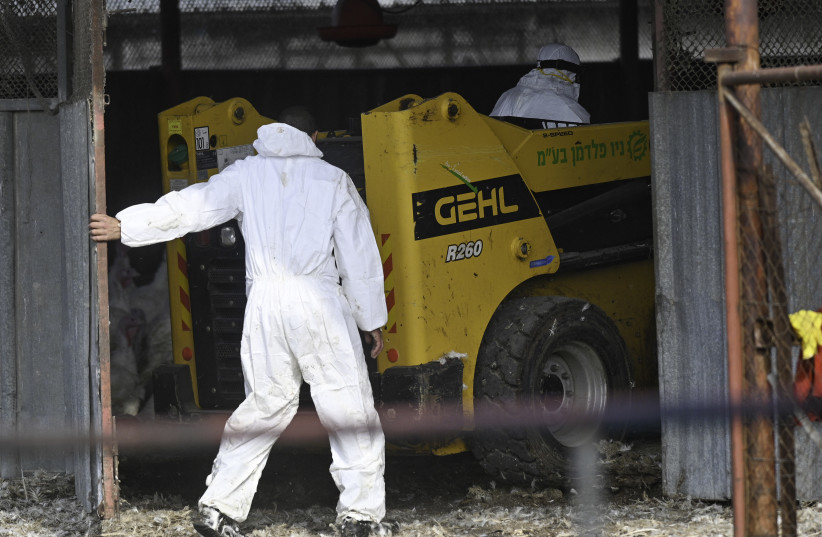Cases of Eurasian H5 Highly Pathogenic Avian Influenza (HPAI) were detected in domestic flocks in New York and Indiana in recent days, as the bird flu continues to spread in North America and around the world.
A small, non-commercial backyard flock in Suffolk County, New York, tested positive for HPAI on Saturday. The flock, consisting of eight birds, will be euthanized to prevent the spread of the virus and will not enter the food system.
The New York Department of Agriculture encouraged poultry producers to take extra steps to protect flocks and called for poultry's outdoor access to be limited.
Additionally, another outbreak of Eurasian H5 HPAI was detected in a commercial flock of turkeys in Indiana, the fourth such outbreak in the state this season. In total, 118,673 commercial turkeys have been affected by the virus in Indiana this season.
The United States Department of Agriculture’s Animal and Plant Health Inspection Service (APHIS) stated that it is working with its federal and state partners on additional surveillance and testing in order to detect the disease.
The new outbreaks come just days after outbreaks were reported in domestic flocks in Virginia and Kentucky.
The first confirmed case of Highly Pathogenic Avian Influenza (HPAI) in a US commercial flock since 2020 was detected in a turkey flock in Indiana earlier this month. The flock was infected with the H5N1 subtype, the same strain detected in mid-January in wild birds in North Carolina when the first cases of HPAI this season were detected in the States.
The first case of H5N1 in North America this season was detected in Newfoundland and Labrador in late December. Since then, the virus has spread to other locations in Canada and the US.
As of Saturday, over 240 wild birds in South and North Carolina, Virginia, Maryland, Georgia, Connecticut, New Hampshire, Delaware and Florida had been found to be infected with Eurasian H5 HPAI, with a number of cases specified as H5N1.
The US Centers for Disease Control has stated that the public health risk from avian influenza remains low, but added that outbreaks in domestic poultry could result in increased exposure in some groups of people, especially poultry workers. A recent update by the World Health Organization stated that the overall pandemic risk associated with the H5 lineage is considered "not significantly changed" compared to previous years.
HPAI can be carried by wild birds without causing symptoms but can cause illness and death in domestic poultry. Human infections can occur after close contact with infected birds but are rare. No human infections with HPAI have ever been detected in the US.
Some 864 human infections and 456 deaths with the H5N1 subtype have been reported in 19 countries since 2003. The latest human infection was a man who owned ducks in the UK; he recovered from the virus.
A large number of bird flu outbreaks have been reported throughout Europe, Africa and Asia in recent weeks and months, mostly due to the H5N1 subtype, which comes from the H5 lineage, according to the World Organization for Animal Health (OIE). The organization warned that a further increase in outbreaks is expected in the coming months.
14 million cases of avian influenza were reported in birds in 2021, more than the previous five years combined, according to figures obtained from the OIE by The Telegraph. 61.4 million birds died either due to the virus or of being culled to prevent its spread.
Scientists warned in The Telegraph report that the increase in outbreaks could help the virus evolve to spread between humans.
“An increase in poultry outbreaks inevitably brings the virus into closer and more frequent proximity to humans, which is always a risk with viruses like influenza that can rapidly evolve,” Dr. Holly Shelton, head of the Influenza Viruses Group at The Pirbright Institute, told The Telegraph.
The OIE has urged countries to increase surveillance for HPAI outbreaks, as the virus has been reported in over 40 countries since July.
The H5N1-6 and H5N8 subtypes of HPAI are circulating in bird and poultry populations across the globe, sparking concern at OIE, which called this an “unprecedented genetic variability of subtypes... creating an epidemiologically challenging landscape.”
Last month, OIE Director General Monique Eloit told Reuters that "this time, the situation is more difficult and more risky because we see more variants emerge, which make them harder to follow."
"Eventually, the risk is that [the virus] mutates or that it mixes with a human flu virus that can be transmitted between humans then suddenly it takes on a new dimension," she said.

